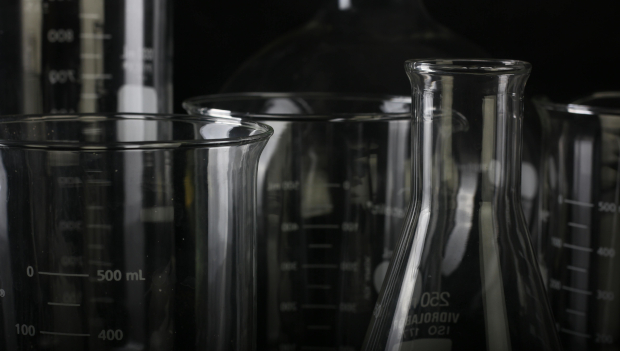
Chemical computer marks another step in fight against excessive energy use
Mathieu Baltussen of Radboud University has set up a precursor of a functioning chemical computer. He will receive his PhD on that subject from Radboud University on 22 September.
The computers we use today are based on electronics, on ones and zeros. That works fine for today’s applications, but with all the developments going on, such as AI, we are going to use a lot of energy. That is why quantum computers are also being developed, or computers inspired by the brain (neuromorphic computers), but Baltussen came up with a different idea: build a computer based on chemical reactions.
“This has been tried before,” Baltussen explained. “Scientists tried to recreate the electronic computers we already have and the transistors we use in them, ie the zeros and ones, with molecules. Only that is very difficult: molecules do not fit nicely into a transistor.”
The chemist therefore drew inspiration from how bacteria deal with information. He added: “A bacterium is looking for food and scans the environment for oxygen, for instance. It does this with the help of chemical reactions. You can think of this as information processing, a kind of calculation – and that is basically what happens in a computer too.”
Baltween looked at what he had left in the lab that he could use to build something with and ended up with the formose reaction: a reaction in chemistry that was probably at the root of the emergence of life on Earth. This involves several sugar-like molecules repeatedly reacting with each other, creating a whole mixture of new, complex molecules.
He devised to use a development from neuromorphic computing: a reservoir computer. Simply put, a reservoir computer is a method that assumes that there is already a complex system doing complicated calculations. You then just need to extract the ‘good computations’. “My hypothesis was that such a formose reaction is actually a reservoir computer: a system that already does very complicated calculations. So that already exists, you don’t have to do anything about it. You just have to know how to use it properly.”
Baltussen tested his hypothesis partly by mimicking the behaviour of an E.coli bacterium with a computer model. He changed the conditions of the bacterium, by adjusting the available nutrients, for example, and did the same for a formose reaction. ‘Then you have to match that and you have to align them. So the formose reservoir learns to predict the outcome of the bacteria (the computer model). And then what you get is that based on how a formose response responds to changing conditions, you can predict how the bacteria behave.’
It turned out to work. Baltussen also managed to predict a basic shape of the weather in this way. “That was kind of amazing, that what I had come up with was correct. It wasn’t obvious, so the fact that it worked was very nice.
“The big advantage is that you need much less energy and data this way. It won’t replace the digital computer, but it could perhaps, like a quantum computer and neuromorphic computing, have a place in a data centre for specific calculations.”
The scientist also envisions applications in nanotechnology, for example in biomedical science. You can then think of smart body sensors. “But that is all still far away. A lot more research needs to be done first – and thus a lot more money needs to be available – to develop this even further,” Baltussen said.
Emerce







Subscribers 0
Fans 0
Followers 0
Followers